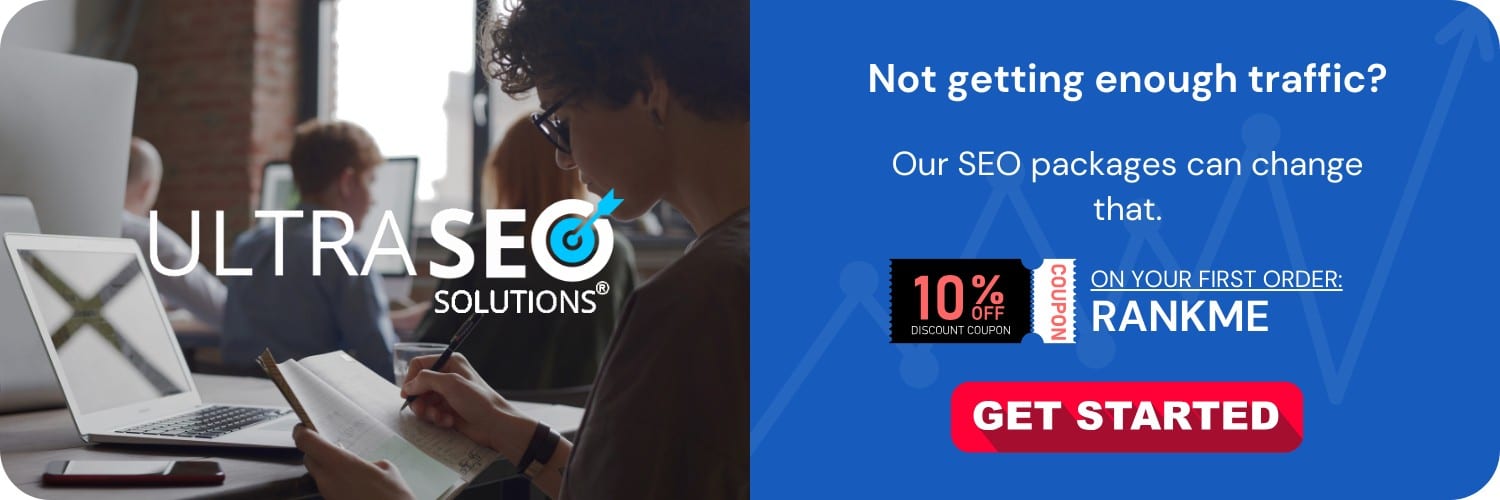
Creating an SEO strategy for an online store involves a comprehensive approach aimed at improving visibility, attracting more qualified traffic, and ultimately increasing sales. At its core, the strategy should focus on optimizing your website’s technical structure, creating valuable and relevant content, enhancing user experience, and building authority through backlinks. To achieve this, a multi-faceted plan combining on-page optimizations, off-page tactics, and technical SEO must be put into place.
Understanding Your Market and Setting Goals
Before diving into the nuts and bolts of SEO, you must understand your market and establish clear goals. Take time to research your target audience, understand their search behavior, and identify the keywords they use. Setting specific, measurable, achievable, relevant, and time-bound (SMART) goals will provide direction and enable you to track progress. These objectives may include ranking for particular keywords, increasing organic traffic, or boosting conversion rates.
Analyzing Competitors
Gleaning Insight from Competitor Strategies
Analyze your competitors to learn what’s working for them. Examine their website structure, content, and backlink profile using SEO tools like SEMrush or Ahrefs. By understanding their strengths and weaknesses, you can uncover opportunities for your own SEO strategy.
Website Optimization
Optimizing Site Structure
A well-structured website helps search engines understand your content and index your pages efficiently. Ensure that your online store has a logical hierarchy, straightforward navigation, and a clear URL structure. Including breadcrumbs can also enhance user navigation and contribute to a hierarchy that search engines can follow.
Improving Page Speed
Page speed is not just a ranking factor; it’s crucial for user experience. Use tools like Google’s PageSpeed Insights to identify areas where you can optimize your site’s loading times. This might include reducing image sizes, leveraging browser caching, or using a content delivery network (CDN).
Ensuring Mobile-Friendliness
With mobile commerce growing rapidly, having a mobile-friendly website is non-negotiable. Employ responsive design principles to ensure that your store provides a seamless experience across all devices.
Implementing Secure Certificates (SSL)
Security is paramount, especially for online stores that handle sensitive customer data. Make sure your site uses HTTPS to protect your customer’s information and reinforce trust.
On-Page SEO Tactics
Keyword Research for Product and Category Pages
Conduct detailed keyword research to find relevant terms for your products and categories. Focus on long-tail keywords that indicate higher purchase intent and that are less competitive but can generate valuable traffic.
Optimizing Product Descriptions and Metadata
Write unique and compelling product descriptions that incorporate your target keywords. Additionally, optimize title tags and meta descriptions to improve click-through rates from search engine results pages (SERPs).
Including Alt Text for Images
Search engines can’t “see” images the way humans can, so it’s essential to include descriptive alt text for all product images. This not only helps search engines understand the content of the image but can also improve accessibility for users with visual impairments.
Content Marketing
Creating Valuable Content
Develop a content strategy that positions your brand as an authority in your niche. This could include blogging about industry trends, how-to guides, or product demonstrations. Quality content attracts backlinks, engages visitors, and encourages sharing on social media.
Optimizing for E-A-T
Expertise, Authoritativeness, and Trustworthiness (E-A-T) are crucial for SEO, especially for YMYL (your money, your life) websites like online stores. Demonstrate your expertise by providing accurate, helpful product information, author bios, and trustworthy reviews.
Technical SEO for E-commerce
Creating a Robust XML Sitemap
A well-organized XML sitemap helps search engines crawl and index your website more effectively. Make sure your sitemap is up-to-date and submitted to Google Search Console.
Managing Crawl Budget
Search engines allocate a certain ‘budget’ to crawl your site. Optimize your crawl budget by fixing broken links, eliminating duplicate content, and minimizing redirects to ensure search engines spend time crawling the most important pages.
Using Schema Markup
Implement structured data using Schema markup to give search engines more context about your pages. This can lead to rich snippets in SERPs, which can boost visibility and click-through rates.
Link Building Strategies
Developing a Backlink Profile
Quality backlinks from reputable websites signal trust and authority to search engines. Reach out to bloggers, influencers, and industry publications to earn links that point back to your site.
Utilizing Internal Linking
Use internal linking to spread link equity throughout your site. Linking from high-authority pages to lesser-known pages can help drive traffic and spread ranking power.
Local SEO and Social Media Presence
Leveraging Local SEO
If you have a physical storefront or serve a particular geographic area, optimize for local SEO. Claim your Google My Business listing, encourage reviews, and ensure that your local citations are consistent across the web.
Engaging on Social Media
Maintain an active social media presence to connect with your audience and drive social signals to your website. This can indirectly impact SEO by increasing brand recognition and content distribution.
Tracking and Measuring Performance
Utilizing Analytics Tools
Use Google Analytics and Search Console to monitor your SEO performance. Track metrics like organic traffic, bounce rate, conversion rates, and keyword rankings to inform adjustments to your SEO strategy.
Conducting Regular Audits
Regular SEO audits can help you identify issues that may be affecting your site’s performance. Addressing these issues promptly ensures that your SEO efforts remain effective over time.
Finishing Thoughts
Creating a successful SEO strategy for an online store is an ongoing process that requires attention to multiple facets of optimization. It’s about understanding your audience, beating your competitors, enhancing your store’s user experience, and ensuring search engines can crawl and index your site effectively. Through diligent application of on-page tactics, robust content marketing, technical optimizations, and strategic link building, you can establish a strong online presence that resonates with both search engines and customers.
Remember, SEO is not a one-time task but a continuous effort to adapt to changes in the market, search engine algorithms, and technology trends. By staying informed, analyzing data, and refining your tactics, you can drive meaningful traffic to your online store and ultimately boost sales. Keep in mind that the real indicator of success is not just higher rankings, but an increase in qualified traffic that converts into customers. Stay patient, persistent, and focused on providing value, and your SEO investments will pay off in the long run.
Frequently Asked Questions
What are the key elements of an SEO strategy for an online store?
The key elements of an SEO strategy for an online store include keyword research to target terms that potential customers are using, optimizing website structure and on-page elements like titles, descriptions, and content for search engines, creating high-quality content that resonates with your audience, building a robust backlink profile, ensuring a mobile-friendly and fast-loading website, and regularly analyzing and adjusting your strategy based on performance data.
How does one perform keyword research for an online store?
Keyword research for an online store involves using tools like Google Keyword Planner, SEMrush, or Ahrefs to identify search terms that are relevant to your products and have a significant search volume. Look for long-tail keywords that are more specific and less competitive, as they can drive targeted traffic to your store. Analyze your competitors to find gaps in their keyword strategy that you can exploit. Always consider search intent and ensure that the keywords are relevant to your products.
Is it important to optimize product descriptions for SEO?
Yes, optimizing product descriptions is critical for SEO because it helps search engines understand what you are selling and can improve your rankings in search results. Use pertinent keywords naturally, provide detailed and unique descriptions, and ensure your content adds value to the user. Structured data, also known as schema markup, can also be added to provide search engines with more information about your products and can lead to rich snippets in search results, potentially improving click-through rates.
How can I make my online store’s website structure SEO-friendly?
To make your website’s structure SEO-friendly, start by creating a logical hierarchy for your categories and products. Use a clear navigation menu that allows both users and search engines to find products easily. Implement breadcrumb navigation and ensure your URL structure includes keywords and is easily understandable. Keep each product category no more than three clicks away from the homepage. Lastly, utilize internal linking to help search engines find and index all your pages.
What role does content marketing play in an SEO strategy for an online store?
Content marketing plays a pivotal role in an SEO strategy for an online store because it attracts and engages users while improving search engine visibility. By creating valuable, relevant content, such as blog posts, guides, and videos related to your products, you can target a broader range of keywords, build trust with potential customers, and earn quality backlinks from other websites. Additionally, content marketing supports social sharing and can drive direct and indirect traffic to your store.
How important are backlinks for an online store’s SEO strategy?
Backlinks are vital for an online store’s SEO strategy because they act as votes of confidence from other websites. They signal to search engines that others find your content valuable and trustworthy. A strong backlink profile can improve your site’s domain authority and thus its rankings. To acquire high-quality backlinks, focus on creating shareable content, engaging with your community, and reaching out to relevant websites and influencers for collaborations or guest posting opportunities.
What should be considered for mobile optimization in SEO?
For mobile optimization, your online store should feature a responsive design that adjusts smoothly to different screen sizes. Loading speed is crucial, so optimize images and minify code to ensure a fast experience. Also, consider the user interface on mobile devices – buttons and links should be easy to tap, and the text should be readable without zooming in. Since mobile-friendliness is a ranking factor, use tools like Google’s Mobile-Friendly Test to check your site’s performance.
Can social media impact my online store’s SEO?
While social media signals are not a direct ranking factor, they can indirectly impact your SEO. A strong social media presence can increase your brand’s visibility, drive traffic to your website, and enhance content distribution, which may lead to more backlinks and higher engagement signals. Moreover, social media profiles and posts can appear in search results, providing additional entry points for potential customers. Therefore, integrating social media into your SEO strategy can be beneficial.
How do I measure the success of my SEO strategy?
To measure the success of your SEO strategy, track key performance indicators (KPIs) such as organic traffic, conversion rate, rankings for targeted keywords, click-through rate (CTR), bounce rate, and the number of backlinks. Use tools like Google Analytics and Google Search Console to monitor these metrics and understand user behavior on your site. Regularly reviewing and analyzing these KPIs can help you refine your SEO strategy and make data-driven decisions to improve performance.
How often should I update my SEO strategy for my online store?
Your SEO strategy should be a dynamic process, continuously adapting to changes in search engine algorithms, market trends, and consumer behavior. Regularly review your KPIs and SEO tactics every few months, and be prepared to make adjustments. Additionally, any time you introduce new products or change your inventory significantly, it’s a good opportunity to update your keyword research and on-page SEO. Finally, be on the lookout for SEO news and updates to ensure your strategy remains current and effective.






